
I began tying this fly this past winter. I consider myself a beginning fly-tyer, and this has been an easy, simple pattern to tie. Despite having tied a lot of these, I haven't fished them enough to really catch much. I'd become so used to a dead drift presentation with dries and nymphs that manipulating wet flies in the water was a strange new world. In short I lacked confidence with these flies for awhile. Lately I've been fishing them more frequently, and I'm starting to get the hang of it. The basic idea is to lightly twitch or pulsate the fly in the water, just under the surface. The soft, reverse hackle will open and shut enticingly, giving the impression of struggling or swimming prey.
Yoshikazu Fujioka's page on the fishing and tying traditional tenkara wet fliesAnd
Chris Stewart'sFor my sakasa kebari I use 6/0 tying thread (you can probably use any color you want), hackle from the hen pheasant, and if I feel like it I'll add a dubbed body, or maybe a collar of peacock herl. I've been using Mustad "Caddies, Curved - STD/1XS" and "Wet/Nymph Egg, Caddis - 2XH/3XS" hooks as they have a slight resemblance to the curve shanked hooks used on many traditional Japanese patterns. Currently I am tying these flies in sizes 8 & 12.
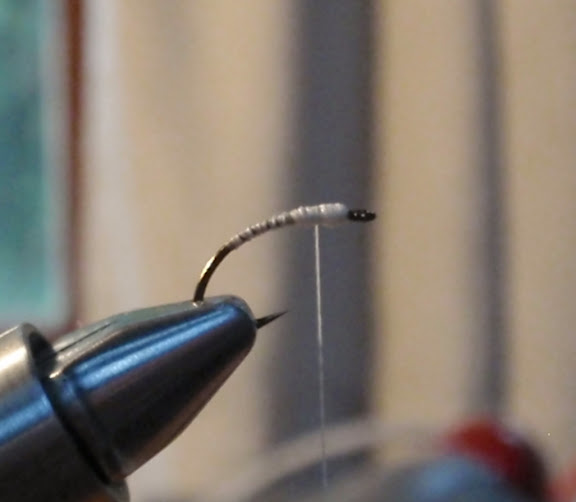
I start by wrapping a thread body, creating a small head behind the eye of the hook, behind which I'll tie in the hackle.
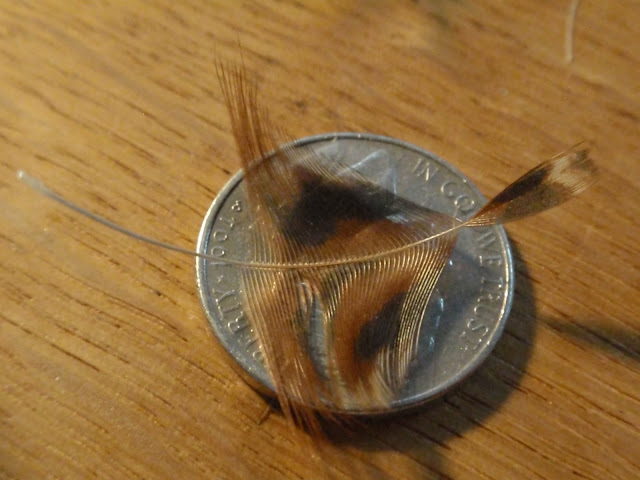
Traditionally hackle from the hen pheasant was used, so that is what I have been using as well, although any soft hackle will do. However, pheasant has the advantage of being very cheap. Feathers form the neck or breast work well, although many of these feathers have a very short useable length, so in order to get the right bushiness I will often tie in two :
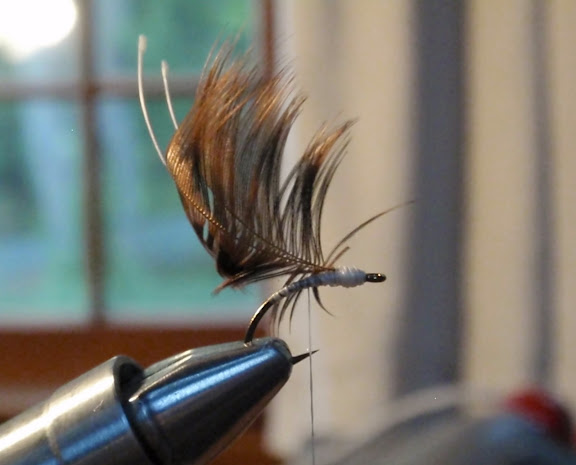
Tie the hackle in by the tips and wrap backwards toward the hook bend:
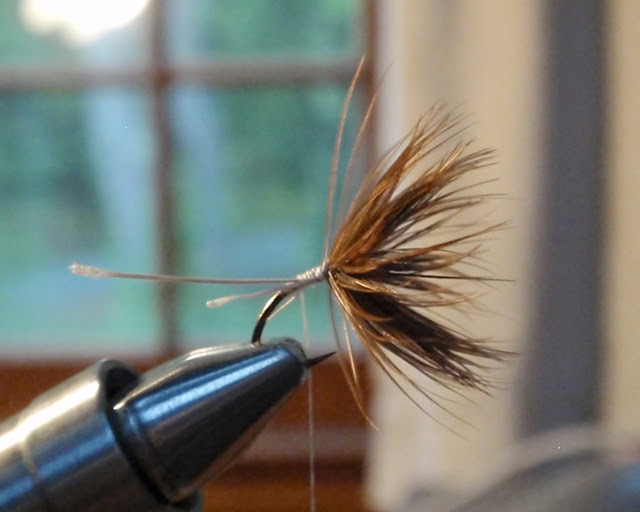
Tie down the stems, I like to take them down the hook shank a little ways with thread wraps to give the fly a little more profile in the body. Then make some thread wraps over the last turn or two of hackle to neaten it all up and keep the hackle pushed forward. At this point, you can either make a body from thread wraps, dub the body, or herl the body. Here I'm going to use a traditional Japanese dubbing material, the cottony fiber which covers some species of fern when they sprout:
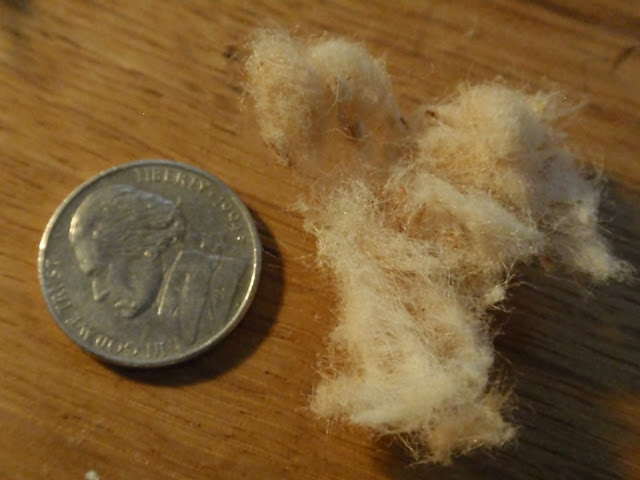
To finish the fly, tie off with half hitches, and add a little head cement to the knot:
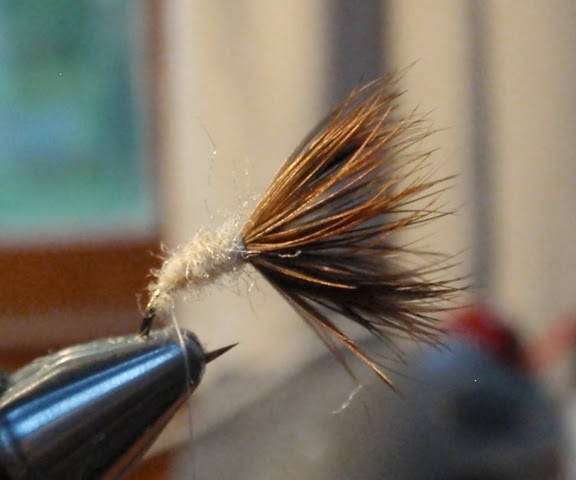
That was my first attempt at using the fern fiber dubbing. It's an interesting material, I'll post more about it as I gain more experience with it. For now I've only used it once, but I will say that the stuff I gathered was more challenging to use than wool or synthetic dubbings.


